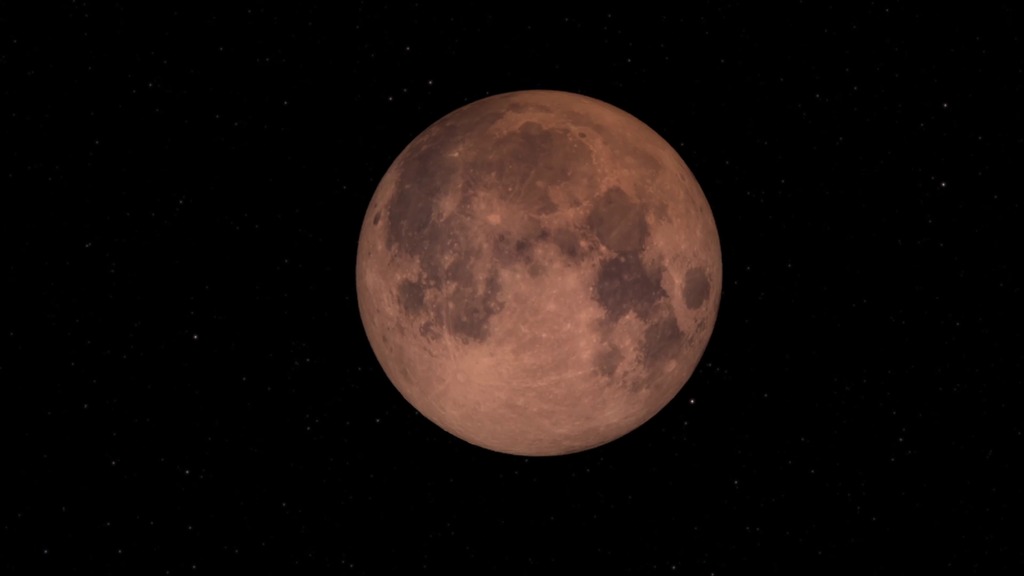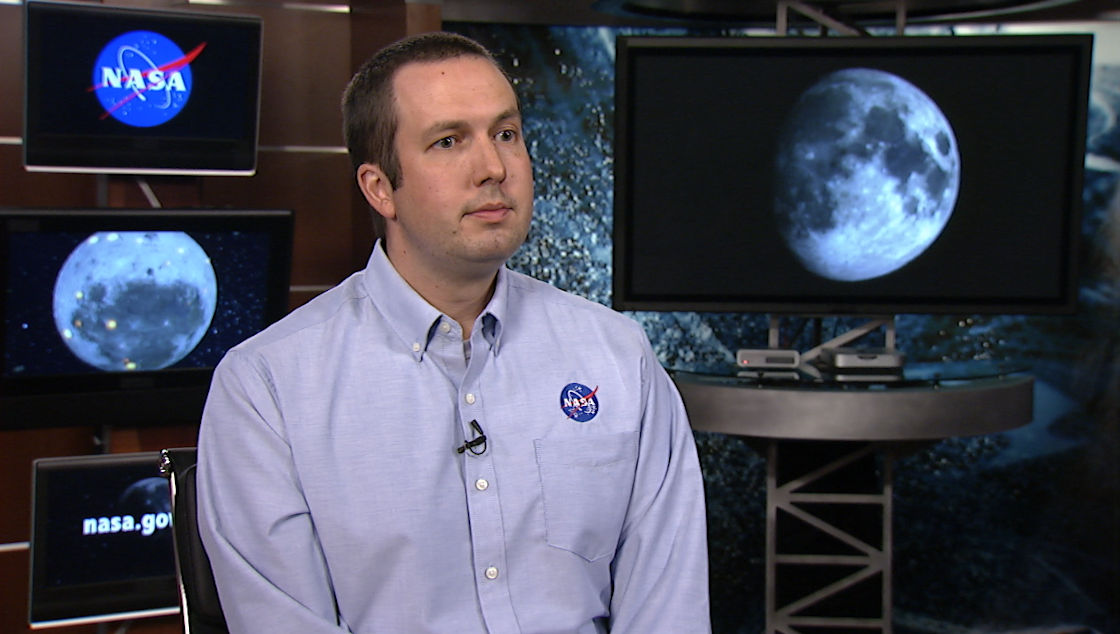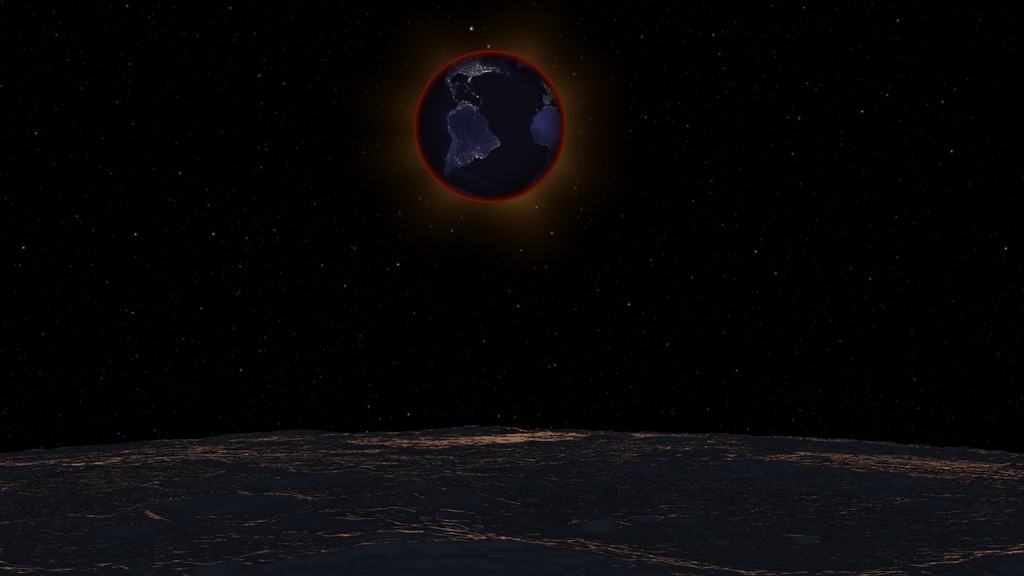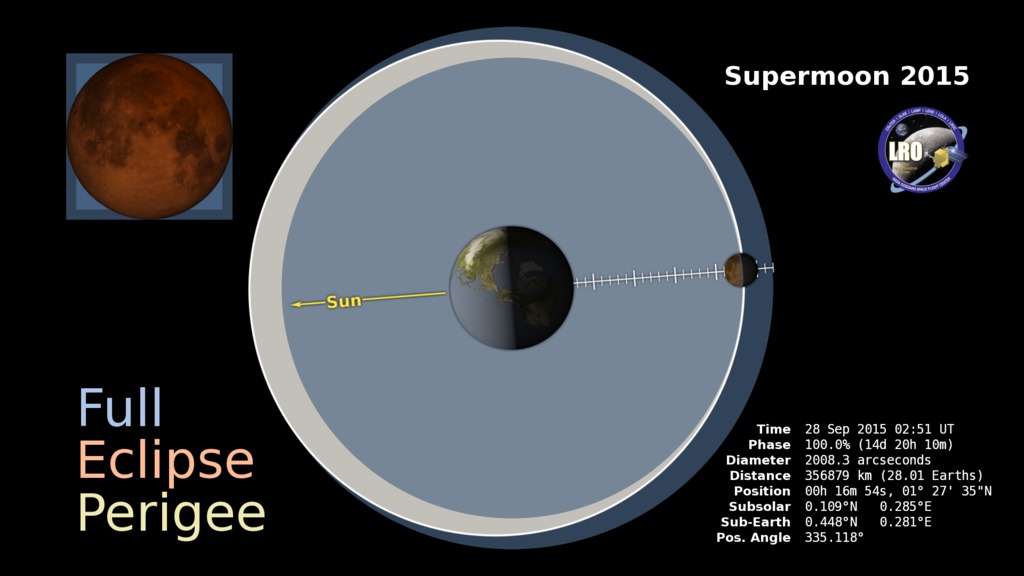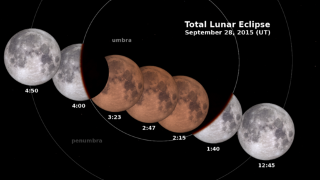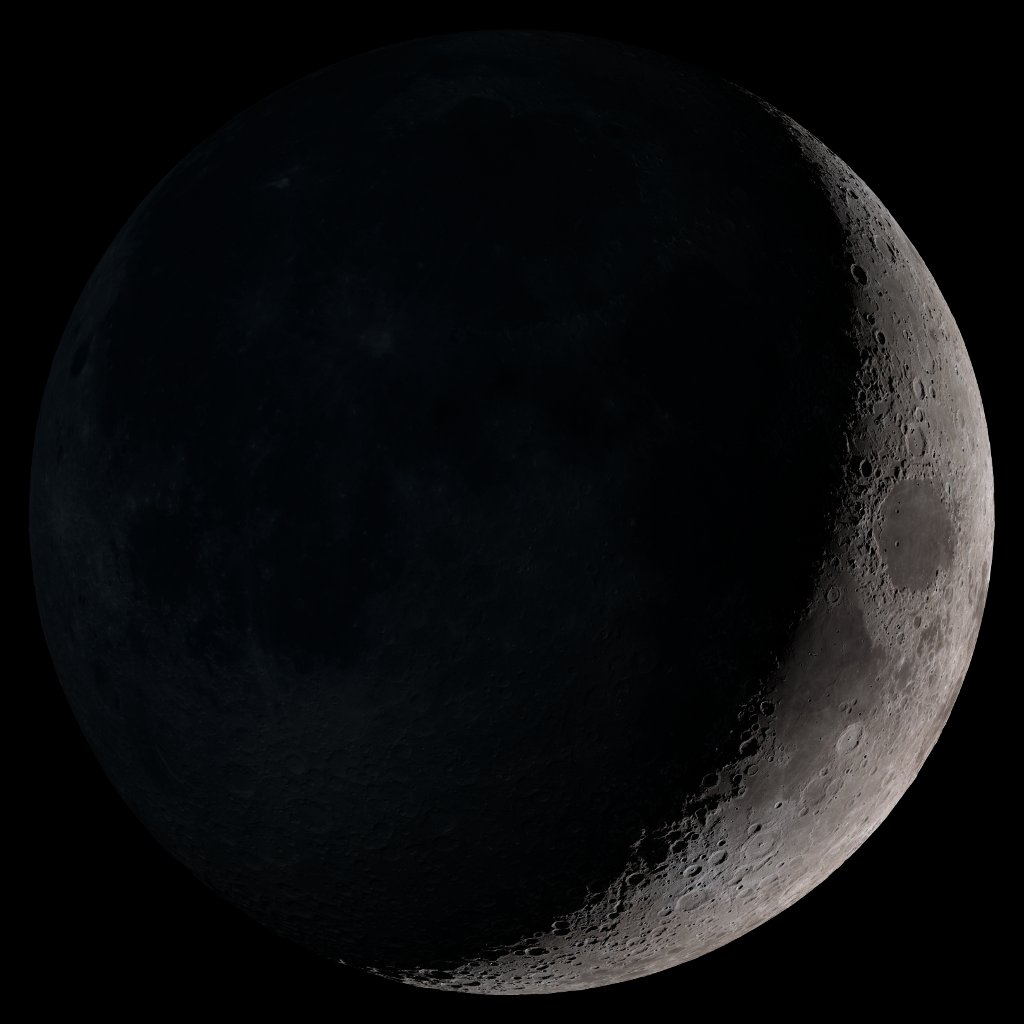LRO and the September 27-28, 2015 Lunar Eclipse: Telescopic View
Enter a time to see what the moon looked like (or will look like) at that time.
| Time (UTC) | 2023-01-01T00:00 |
|---|---|
| Phase | 00.0% (0d 0h 0m) |
| Diameter | 0000.0 arcseconds |
| Distance | 00.0 km (0.00 Earth diameters) |
| J2000 Right Ascension, Declination | 0h 0m 0s, 0° 0' 0" |
| Sub-Solar Longitude, Latitude | 0.000°, 0.000° |
| Sub-Earth Longitude, Latitude | 0.000°, 0.000° |
| Position Angle | 0.000° |
Typically, the Lunar Reconnaissance Orbiter (LRO) spacecraft flies over the night side of the Moon every two hours, spending about 45 minutes in darkness. Because LRO is powered by sunlight, it uses a rechargeable battery to operate while on the night side of the Moon and then charges the battery when it comes back around into daylight.
During the total lunar eclipse of September 27-28, 2015, however, LRO emerges from the night side of the Moon only to find the Sun blocked by the Earth. LRO needs to travel an entire orbit before seeing the Sun again, relying continuously on its battery for almost three hours.
LRO won’t be in any real danger as long as its power consumption is handled carefully. Except for LRO's infrared radiometer, called Diviner, its scientific instruments will be turned off temporarily, while vital subsystems like the heaters will remain on. LRO will be closely monitored throughout the eclipse.
Diviner maps the temperature on the Moon's surface along a swath below LRO's orbit. During the eclipse, the instrument will precisely measure the rapid temperature changes that occur as the Moon enters and leaves the Earth's shadow. When compared with normal daylight variations, these measurements will reveal new details about the top centimeter (half-inch) of lunar regolith. Diviner wasn't specifically designed for this experiment, but as scientists have gained experience with the LRO spacecraft, they've thought of new and creative ways of using its instruments.
This animation shows the Moon as it might look through a telescope on Earth, along with LRO’s orbit, its view of the Sun, and a fuel gauge showing received sunlight and the battery’s charge.
The appearance of the Moon during the lunar eclipse at 10 seconds per frame. Displays LRO's orbit, its view of the Sun, and meters for the amount of sunlight LRO is receiving and the charge of its battery.
This video is also available on our YouTube channel.
The appearance of the Moon during the lunar eclipse at 10 seconds per frame. Displays LRO's orbit. The frames include an alpha channel.
The appearance of the Moon during the lunar eclipse at 10 seconds per frame. Omits LRO's orbit. The frames include an alpha channel.
LRO's view of the Sun during the eclipse. The view is dark when the Moon is in the way.
For More Information
Credits
Please give credit for this item to:
NASA's Scientific Visualization Studio
-
Visualizer
- Ernie Wright (USRA)
-
Producers
- David Ladd (USRA)
- Michelle Handleman (USRA)
-
Scientists
- John Keller (NASA/GSFC)
- Noah Petro (NASA/GSFC)
Release date
This page was originally published on Tuesday, September 15, 2015.
This page was last updated on Thursday, November 9, 2023 at 1:48 PM EST.
Missions
This visualization is related to the following missions:Series
This visualization can be found in the following series:Datasets used in this visualization
-
DEM (Digital Elevation Map) [LRO: LOLA]
ID: 653 -
DE421 (JPL DE421)
ID: 752Planetary ephemerides
This dataset can be found at: http://ssd.jpl.nasa.gov/?ephemerides#planets
See all pages that use this dataset -
WAC 643nm High Sun Global Mosaic [LRO: LROC]
ID: 803
Note: While we identify the data sets used in these visualizations, we do not store any further details, nor the data sets themselves on our site.

